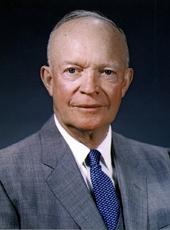To the Congress o/the United States:
This message is submitted pursuant to the provisions of Section 4 of the Trade Agreements Extension Act of 1951, as amended.
Under the authority of the trade agreements legislation, the United States entered into a trade agreement at Geneva, Switzerland on May 23, 1956 with other contracting parties to the General Agreement on Tariffs and Trade. A copy of that agreement is submitted herewith. The United States received tariff concessions from other countries on various products exported by the United States in return for tariff concessions by the United States.
On two products the United States by separate action negotiated increases in the existing rates of duty. In one case, involving certain fur-felt hat bodies, a court decision had in effect nullified tariff increases which were proclaimed a few years ago as the result of an escape clause investigation. In its peril point investigation on these hat bodies, the Tariff Commission found that the lower rates resulting from the court decision should be increased. The negotiated increases raise the rates of duty to the peril points found by the Tariff Commission, and in general restore the rates which had been applicable under the escape clause proclamation prior to the court decision. In the other case, involving liquid sugar, there had been no peril point finding that an increase was necessary; the objective was to equalize the rates applicable to dry and liquid sugar.
In the other two cases--certain tungsten alloys and violins and violas--in which the Tariff Commission reported that increases in existing rates of duty were required, it was found that the advantages of negotiating the increases would have been outweighed by attendant disadvantages which made it undesirable to accomplish the increases by this means. Also, in the case of tungsten alloys, only one group was listed for negotiation while others, including ferro-tungsten, the most important in terms of imports, was not listed. Increasing the duty on the listed alloys would thus have unduly complicated our tariff structure without adequate economic justification. For these reasons, increased rates on tungsten alloys and violins and violas were not included in the trade agreement. These considerations would not be a bar to applications by domestic producers of these products for escape clause action under the provisions of Section 7 of the Trade Agreements Extension Act of 1951.
DWIGHT D. EISENHOWER
Note: Entitled "General Agreement on Tariff and Trade, Sixth Protocol of Supplementary Concessions, May 23, 1956," the trade agreement transmitted with this message is published in the Treaties and Other International Acts Series (TIAS 3591; Government Printing Office, 1956) and in the United States Treaties and Other International Agreements (7 U. S. T. 1083).
Dwight D. Eisenhower, Special Message to the Congress Concerning Trade Agreement Actions. Online by Gerhard Peters and John T. Woolley, The American Presidency Project https://www.presidency.ucsb.edu/node/232929

